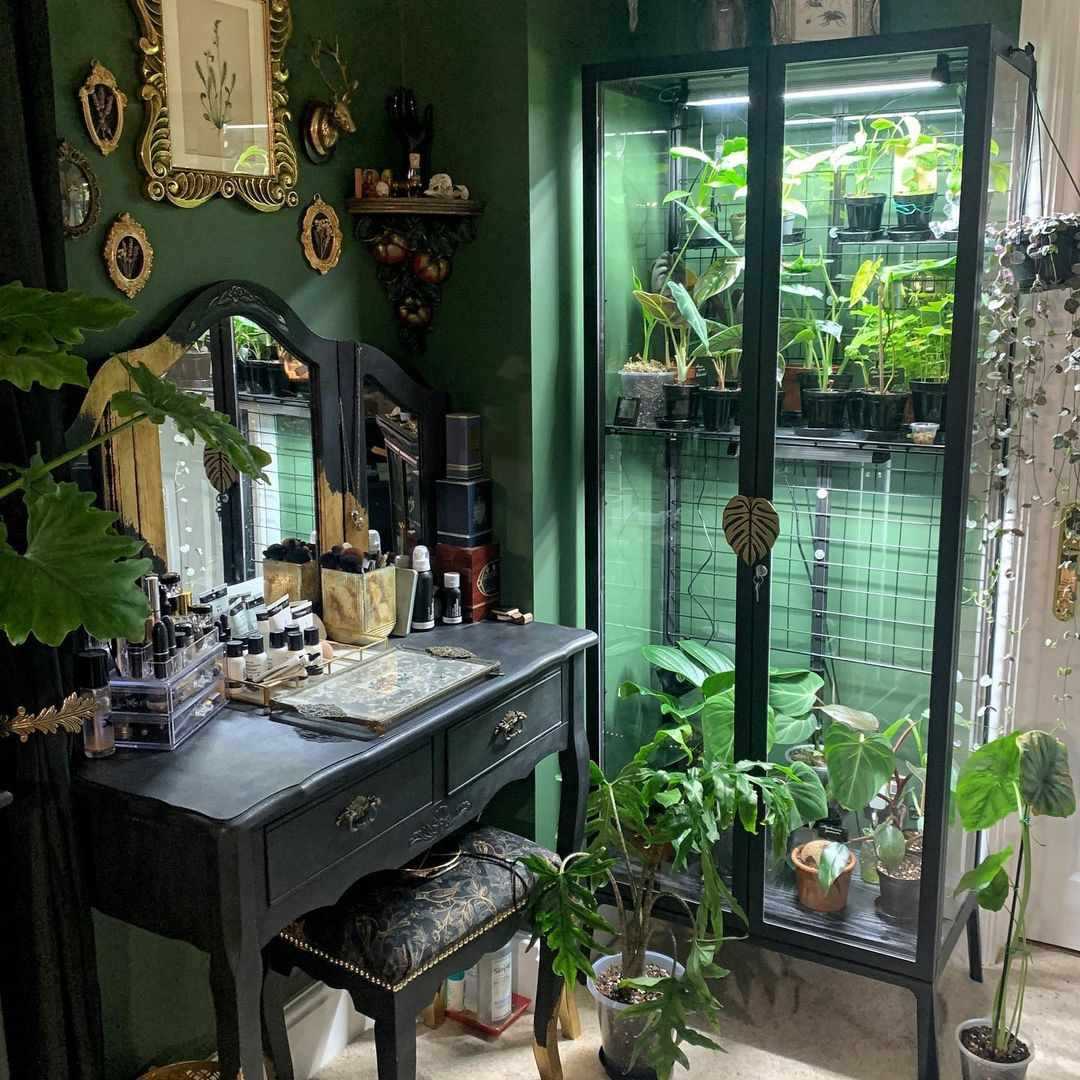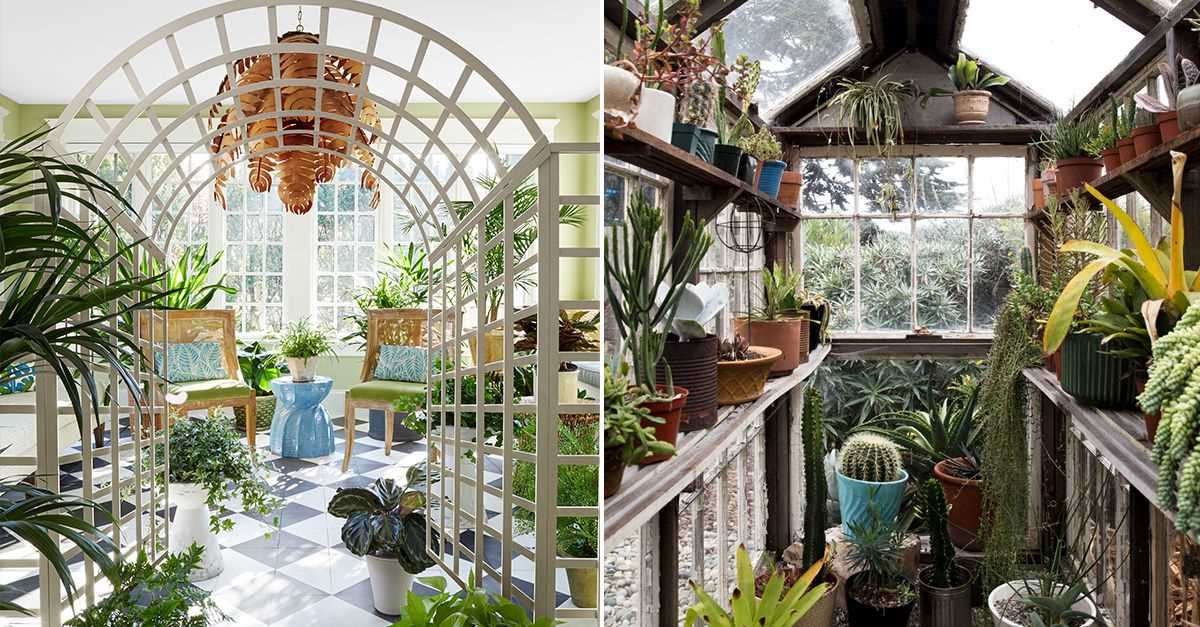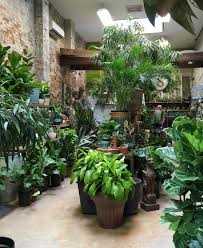Indoor Greenhouse How to Create a Thriving Garden Inside Your Home

Having an indoor greenhouse is a great way to bring the beauty and benefits of nature into your home. Whether you live in a small apartment or a spacious house, you can create a thriving garden inside with the right setup and care. Indoor greenhouses allow you to grow plants all year round, regardless of the weather outside.
One of the key factors to consider when setting up an indoor greenhouse is lighting. Plants need light to photosynthesize and grow, so it’s important to provide them with adequate artificial lighting. LED grow lights are a popular choice for indoor gardening, as they are energy-efficient and can be customized to provide the right spectrum of light for different stages of plant growth.
Another important factor to consider is temperature and ventilation. Indoor greenhouses can get hot and humid, especially during the summer months. It’s important to monitor and regulate the temperature to ensure that it stays within the optimal range for your plants. Ventilation is also crucial to prevent the buildup of excessive humidity and to ensure that fresh air circulates in the greenhouse.
When it comes to growing plants indoors, hydroponics is a popular method. Hydroponics is a soilless growing technique that allows plants to grow in a nutrient-rich water solution. This method is efficient and can result in faster growth and higher yields. It’s important to monitor and maintain the pH and nutrient levels in the water to ensure that your plants are getting the right amount of nutrients.
Lastly, humidity is another important factor to consider when creating an indoor greenhouse. Different plants have different humidity requirements, so it’s important to research the specific needs of the plants you want to grow. You can use a hygrometer to monitor the humidity levels in your greenhouse and make adjustments as needed.
Creating an indoor greenhouse can be a rewarding and fulfilling project. With the right setup and care, you can enjoy the beauty and benefits of plants all year round, right in the comfort of your own home.
Benefits of an Indoor Greenhouse

An indoor greenhouse offers several benefits for hydroponics enthusiasts and plant lovers alike. Whether you have limited outdoor space or simply want to enjoy gardening year-round, an indoor greenhouse can provide the perfect solution.
- Controlled Environment: One of the biggest advantages of an indoor greenhouse is the ability to control the environment. You can adjust the temperature, humidity, and lighting to create the optimal conditions for your plants to thrive. This control allows you to grow a wide variety of plants that may not be suitable for your outdoor climate.
- Year-Round Gardening: With an indoor greenhouse, you can enjoy gardening all year long, regardless of the season. You can grow vegetables, herbs, and flowers even during the coldest winter months. This means you can have fresh produce and beautiful blooms at your fingertips no matter the time of year.
- Increased Plant Growth: Indoor greenhouses provide plants with consistent lighting and temperature, which can promote faster and healthier growth. The controlled environment eliminates the stress caused by fluctuating weather conditions, pests, and diseases. This can result in stronger, more productive plants.
- Protection from Pests and Diseases: By keeping your plants indoors, you can protect them from common garden pests and diseases. This reduces the need for pesticides and fungicides, making your garden more environmentally friendly. Additionally, indoor greenhouses provide a physical barrier that keeps out unwanted insects and animals.
- Optimal Lighting: Indoor greenhouses are equipped with artificial lighting systems that mimic natural sunlight. This ensures that your plants receive the right amount and quality of light for photosynthesis. You can adjust the lighting schedule to match each plant’s specific needs, promoting healthy growth and flowering.
- Improved Humidity Control: Many indoor greenhouses come with built-in humidity control systems. This is especially beneficial for plants that require high humidity levels, such as tropical species. You can maintain the ideal humidity level in your greenhouse, creating a microclimate that is perfect for your plants.
- Space Efficiency: Indoor greenhouses are designed to maximize space efficiency. They can be compact and fit into small apartments or homes, allowing you to have a garden even in limited spaces. Vertical gardening techniques and shelving systems can further optimize the use of space, allowing you to grow more plants.
- Improved Air Quality: Plants naturally purify the air by removing toxins and releasing oxygen. Having an indoor greenhouse can improve the air quality in your home, making it healthier and more pleasant to live in. The greenhouse environment also helps to regulate humidity levels and reduce indoor air pollution.
- Enhanced Aesthetics: An indoor greenhouse adds a touch of natural beauty to your home. It can serve as a decorative element, creating a calming and inviting atmosphere. The lush greenery and vibrant colors of your plants can brighten up any space and bring a sense of serenity and tranquility.
Improved Air Quality

An indoor greenhouse can greatly improve the air quality in your home. By controlling the humidity and temperature levels, a greenhouse provides an optimal environment for plants to grow. As plants release moisture through a process called transpiration, they increase the humidity in the air. This can help to combat dryness in the winter months and create a more comfortable living space.
In addition to controlling humidity, a greenhouse also helps to regulate temperature. The enclosed space allows for better insulation, keeping the temperature stable and preventing drastic fluctuations. This can be especially beneficial for delicate plants that require specific temperature ranges to thrive.
Proper ventilation is an essential component of an indoor greenhouse. It helps to circulate fresh air, preventing the buildup of stale air and odors. Good ventilation also helps to regulate the humidity levels, preventing excessive moisture that can lead to mold and mildew growth. By ensuring a constant flow of fresh air, you can create a healthier and more pleasant living environment.
Lighting is another important factor in improving air quality in an indoor greenhouse. Plants require light for photosynthesis, the process by which they convert carbon dioxide into oxygen. By providing adequate lighting, you not only promote plant growth but also increase the amount of oxygen in the air. This can have a positive impact on the overall air quality in your home.
When choosing plants for your indoor greenhouse, consider using hydroponics. This method of growing plants without soil allows for better control over nutrient levels and water quality. By using a water-based system, you can ensure that the plants receive the necessary nutrients and eliminate the risk of soil-borne diseases. This can contribute to cleaner and healthier air in your home.
In conclusion, an indoor greenhouse offers numerous benefits for improving air quality in your home. By controlling humidity, temperature, ventilation, lighting, and using hydroponics, you can create a thriving garden that enhances the overall living environment. So why not bring the beauty of nature indoors and enjoy the many advantages of an indoor greenhouse?
Year-round Gardening

Indoor greenhouses offer the perfect solution for year-round gardening. With the right setup, you can grow a variety of plants indoors regardless of the season. Here are some important factors to consider for successful year-round gardening:
- Hydroponics: Consider using hydroponics, a soil-less method of growing plants, for efficient and space-saving gardening.
- Ventilation: Proper ventilation is crucial to maintain fresh air circulation and prevent the buildup of excess heat and humidity.
- Temperature: Maintain the ideal temperature range for your plants by using thermostats and heaters or air conditioners, depending on the season.
- Greenhouse: Invest in a greenhouse structure to create a controlled environment that protects your plants from external factors and provides insulation.
- Lighting: Use artificial lighting sources like LED grow lights to provide the necessary amount and spectrum of light for your plants’ growth.
- Indoor: Choose suitable indoor plants that thrive in low light conditions and can tolerate the indoor environment.
- Humidity: Monitor and adjust humidity levels to prevent mold growth and ensure optimal conditions for your plants.
By considering these factors and providing the right conditions, you can enjoy gardening all year round and have a thriving indoor garden.
Stress Reduction

Creating an indoor greenhouse can provide many benefits, including stress reduction. The combination of natural lighting, greenery, and the act of gardening can have a calming effect on the mind and body.
Indoor greenhouses allow you to grow a variety of plants, including herbs, vegetables, and flowers, all year round. The process of caring for these plants can be therapeutic and help to reduce stress levels.
One of the main advantages of indoor greenhouses is the ability to control the environment. You can adjust the temperature, humidity, and lighting to create the ideal conditions for your plants to thrive. This level of control can also help to create a calming atmosphere for yourself.
Studies have shown that being surrounded by nature can have a positive impact on mental health and well-being. The presence of plants indoors can improve air quality, reduce noise levels, and create a sense of tranquility.
Hydroponics is a popular method of growing plants indoors. This technique involves growing plants without soil, using water and nutrient solutions instead. Hydroponics can be a great option for stress reduction, as it allows you to focus on the process of growing and caring for your plants without the added stress of dealing with soil.
In addition to the physical benefits, indoor greenhouses can also provide a sense of accomplishment and fulfillment. Watching your plants grow and thrive can be incredibly rewarding and can help to improve your mood and overall well-being.
Consider setting up an indoor greenhouse in your home to create a peaceful and stress-free environment. Whether you have a small space or a larger area, there are options available to suit your needs. Start by researching different plants that are suitable for indoor growing and create a plan for your greenhouse setup.
Remember to choose plants that are low-maintenance and can thrive in the conditions you can provide. Some popular options include herbs like basil and mint, leafy greens like lettuce and spinach, and flowering plants like orchids and peace lilies.
Invest in proper lighting and ventilation to ensure your plants have the best chance of success. Consider using a timer for your lights to mimic natural daylight cycles. This will help to regulate the plants’ growth and promote a healthy environment.
Overall, creating an indoor greenhouse can be a great way to reduce stress and improve your overall well-being. Take the time to research and plan your setup, and enjoy the benefits of having a thriving garden inside your home.
Creating Your Indoor Greenhouse

Creating an indoor greenhouse allows you to grow plants all year round, regardless of the outdoor weather conditions. Whether you have limited outdoor space or simply want to bring the beauty of nature indoors, an indoor greenhouse is the perfect solution.
There are a few key factors to consider when setting up your indoor greenhouse:
- Hydroponics: Consider using a hydroponic system for your indoor greenhouse. This method of growing plants without soil allows for efficient nutrient absorption and faster growth.
- Lighting: Adequate lighting is crucial for your plants’ photosynthesis process. Choose the right type of grow lights, such as LED or fluorescent lights, to provide the necessary light spectrum for optimal plant growth.
- Temperature: Maintaining a stable temperature is essential for the health of your plants. Most plants thrive in temperatures between 65°F and 75°F (18°C and 24°C). Use a thermometer to monitor the temperature inside your greenhouse.
- Greenhouse: Invest in a greenhouse structure to create the ideal environment for your plants. A greenhouse provides insulation, protection from pests, and allows you to control the temperature and humidity levels.
- Humidity: Plants require a certain level of humidity to thrive. Use a hygrometer to measure the humidity inside your greenhouse. If the humidity is too low, consider using a humidifier or misting the plants regularly.
- Ventilation: Proper ventilation is crucial to prevent the buildup of excess heat and humidity. Install fans or vents in your greenhouse to ensure a constant airflow that helps regulate temperature and prevents the growth of mold and mildew.
By considering these factors and implementing them in your indoor greenhouse, you can create an ideal environment for your plants to grow and thrive. Enjoy the beauty of nature right inside your home!
Video:Indoor Greenhouse How to Create a Thriving Garden Inside Your Home
25 Survival Vegetables To Grow In Your Apartment (pt1)
Hello, I am Beverly J. Sanders, the voice behind the diverse articles you come across on styves.co.za. My passion lies in exploring the nuances of home improvement and sharing tips that can help you transform your living space into a haven of comfort and style. From the latest trends in home decor to practical cleaning advice, I cover a broad spectrum of topics to cater to a wide variety of interests.
In my recent works, I have delved into the advantages of incorporating a horizontal Murphy bed into your home to save space without compromising on design and functionality. I also explored the benefits of having a free-standing electric fireplace that not only adds warmth to your home but also brings a sleek and modern design to any living space. My articles are a rich resource, offering insights into different products and home improvement strategies that can enhance the quality of your life.
I believe in the power of details; a belief that reflects in my comprehensive guides where I discuss even the overlooked aspects of home decor, such as the impact of baseboard trim in enhancing the overall look and feel of your home. I am constantly on the lookout for innovative solutions and products that can add value to your home and life.
Join me in my exploration as I continue to bring you the latest trends, tips, and insights in the home improvement world. Let’s create a home that is not just a place to live, but a reflection of style and personality.